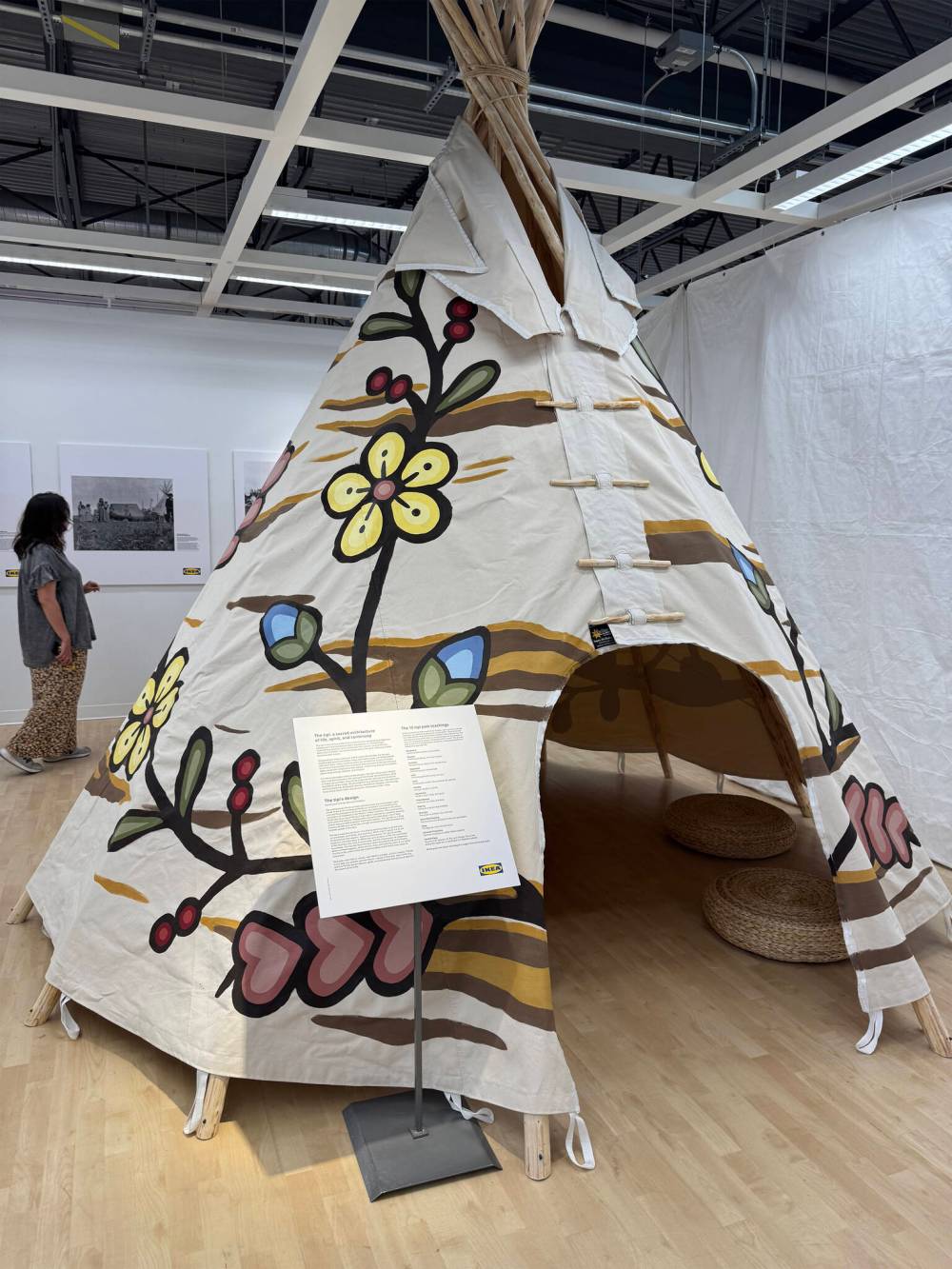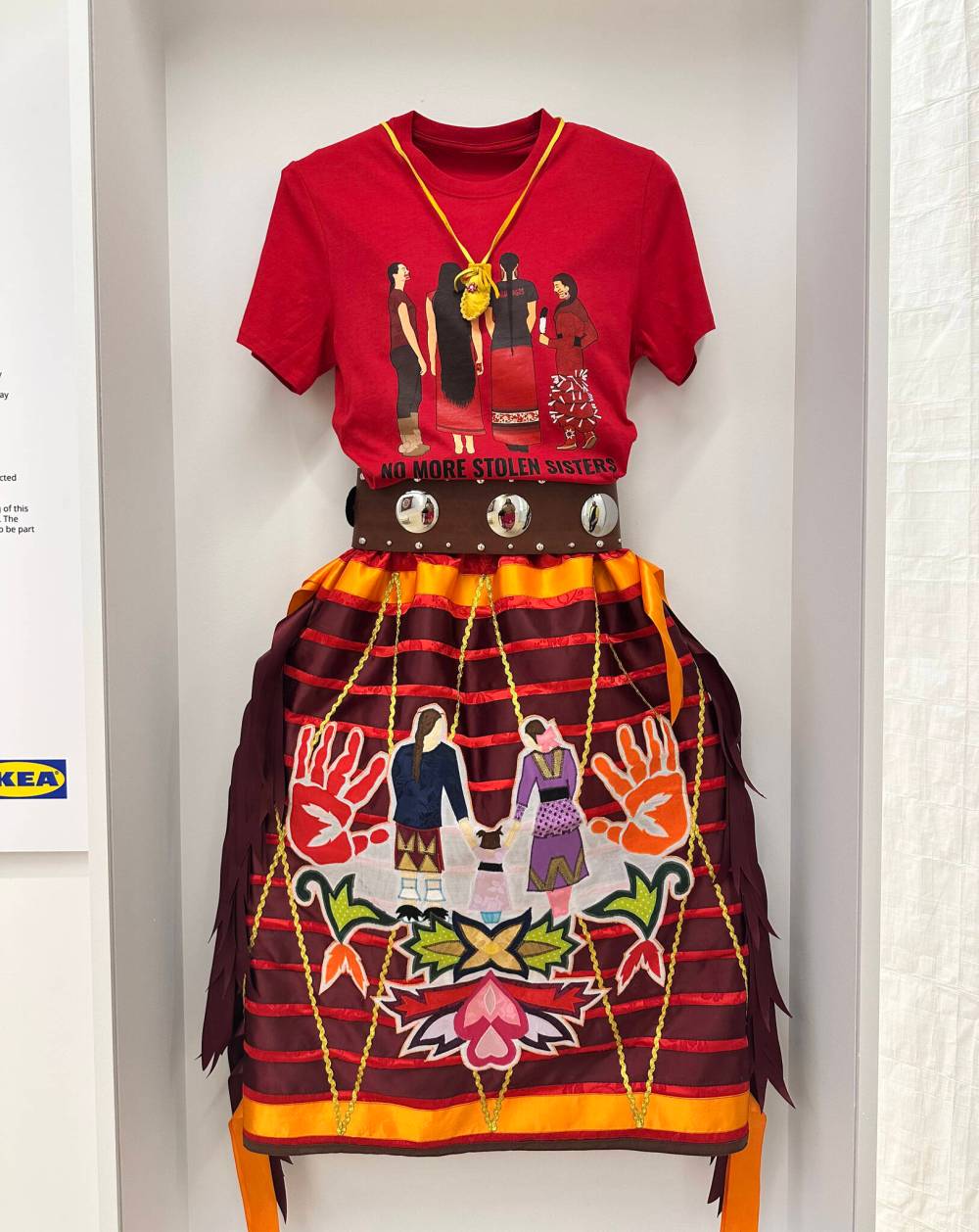Swedish furniture store an unlikely place to inspire Indigenous pride
Advertisement
Read this article for free:
or
Already have an account? Log in here »
To continue reading, please subscribe:
Monthly Digital Subscription
$1 per week for 24 weeks*
- Enjoy unlimited reading on winnipegfreepress.com
- Read the E-Edition, our digital replica newspaper
- Access News Break, our award-winning app
- Play interactive puzzles
*Billed as $4.00 plus GST every four weeks. After 24 weeks, price increases to the regular rate of $19.00 plus GST every four weeks. Offer available to new and qualified returning subscribers only. Cancel any time.
Monthly Digital Subscription
$4.75/week*
- Enjoy unlimited reading on winnipegfreepress.com
- Read the E-Edition, our digital replica newspaper
- Access News Break, our award-winning app
- Play interactive puzzles
*Billed as $19 plus GST every four weeks. Cancel any time.
To continue reading, please subscribe:
Add Winnipeg Free Press access to your Brandon Sun subscription for only
$1 for the first 4 weeks*
*$1 will be added to your next bill. After your 4 weeks access is complete your rate will increase by $0.00 a X percent off the regular rate.
Read unlimited articles for free today:
or
Already have an account? Log in here »
Saturday marks Canada’s 29th National Indigenous Peoples Day.
It happens every year, on June 21, the summer solstice, the day with the longest sunlight in the northern hemisphere. National Indigenous Peoples Day was proclaimed by the federal government in 1996 and was intended to honour the cultural significance of this time of the year while celebrating the contributions of Indigenous peoples to Canada.
The day has been expanded to become National Indigenous Peoples Month because, frankly, it’s impossible to encapsulate Indigenous history, culture, and contributions to Canada into a single anything.

NIIGAAN SINCLAIR / FREE PRESS
IKEA’s Indigenous space features a teepee designed by artist Micaela Gilbert of Sagkeeng First Nation.
The term Indigenous, for example, includes First Nations, Inuit, and Métis peoples. ‘Nuff said.
The day is also expanding into other areas.
I’ve written before about all of the events happening in places we now know regularly stage Indigenous events — so much so it would be weird if they did not. I’m talking about universities and schools, sporting events, and public spaces like The Forks.
This year, though, I never thought I would add a Swedish-based department store to the list.
If you walk through the popular furniture store IKEA on Saturday, you will see two new installations: an Indigenous ceremonial space and an Indigenous living room.
You read that right.
There is a teepee in the middle of hide-a-beds and make-it-yourself furniture.
Curated by artist Lesley Beardy, the Winnipeg IKEA store’s new Indigenous adviser and curator, the two rooms signal a remarkable – and colourful – interruption in the everyday experience of looking for meatballs, a lamp, or bookcase.

NIIGAAN SINCLAIR / FREE PRESS
IKEA’s new installation showcases an Indigenous living room.
I was invited for a sneak preview earlier in the week.
The installation is one part art, one part traditional, and all parts IKEA.
In the first room, customers are welcomed by signage, in Ojibwa, Cree, and English, that explains traditional ceremonies. It features archival and modern photographs of Indigenous homes and families. There are traditional medicines of sage, sweet grass, tobacco, and cedar and a red dress honouring missing and murdered Indigenous women, girls, and two-spirit peoples.
Then there’s the teepee.
Designed by artist Micaela Gilbert of Sagkeeng First Nation, the colourful hide is covered in birch bark and flower designs, while each of the 15 poles that hold it up is marked with a word that represents a teaching.
It makes you almost forget you are sitting on pillows you can buy for a few dollars at the cash register downstairs.
Then there’s the second room — and most remarkable part — of the installation: the Indigenous living room.

NIIGAAN SINCLAIR / FREE PRESS
The beadwork corner.
Here is not only one of the most positive and beautiful displays of an Indigenous family in Manitoba through photos, but evidence of all the things that make a family; games, space for visiting, and art.
There is a beadwork corner, a glass case where traditional medicine is kept, photographs of babies, a graduating student and a #1 Koko (grandmother) award.
Of course, the two IKEA Indigenous spaces are meant to encourage commercialism, capitalism, and purchasing furniture, storage units, and blankets – but I can say without a doubt that I never thought I would see such a thing in the place I buy my bedspreads.
It’s a sign, perhaps most of all, of a big change happening in this place.
Obviously, a department store needs to make money. Clearly though, the management of this one views Indigenous peoples as a market worth investing in.
This makes sense. There are more Indigenous professionals than ever before and, with that, more than ever that make up the “middle class” — and can afford such items.
But this isn’t the change I’m speaking about.

The vast majority of customers who can afford IKEA furniture are the 78 per cent of Canadians who make up the middle class, which in Manitoba means making an approximate income of between $50,000 to $100,000.
These are the Canadians who, because they work alongside, live beside, or are married to an Indigenous person, won’t be shocked when they push their cart and suddenly see a teepee as a part of their shopping experience.
In fact, the store manager is betting they will be so comfortable after seeing it that, not only will they stop and look and learn, but they will be so comfortable about the experience that they will want to take a piece of it home.
Did I mention the installation is permanent?
I am fully aware that this is starting to sound like a paid advertisement. Perhaps this is part of the motivation to do such a display, too; to get people like myself to talk about it.
But how can one not?
I took my teenage daughter, and as we walked through the exhibit, I kept commenting about how surprised I was with what I was seeing.

NIIGAAN SINCLAIR / FREE PRESS
Artist Lesley Beardy is the Winnipeg IKEA store’s new Indigenous adviser and curator.
“What did you expect, Dad?” she asked me. “Indigenous peoples love furniture, too.”
Indeed.
Happy National Indigenous Peoples Day.
niigaan.sinclair@freepress.mb.ca

Niigaan Sinclair is Anishinaabe and is a columnist at the Winnipeg Free Press.
Our newsroom depends on a growing audience of readers to power our journalism. If you are not a paid reader, please consider becoming a subscriber.
Our newsroom depends on its audience of readers to power our journalism. Thank you for your support.

